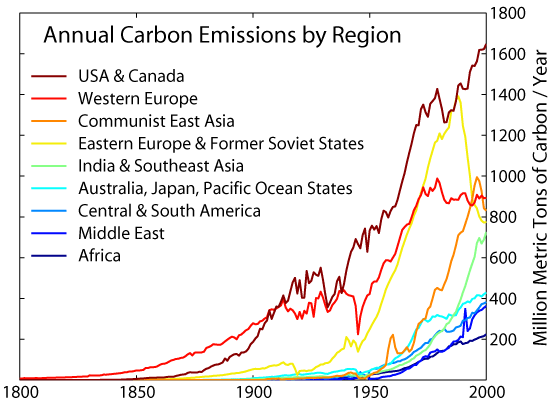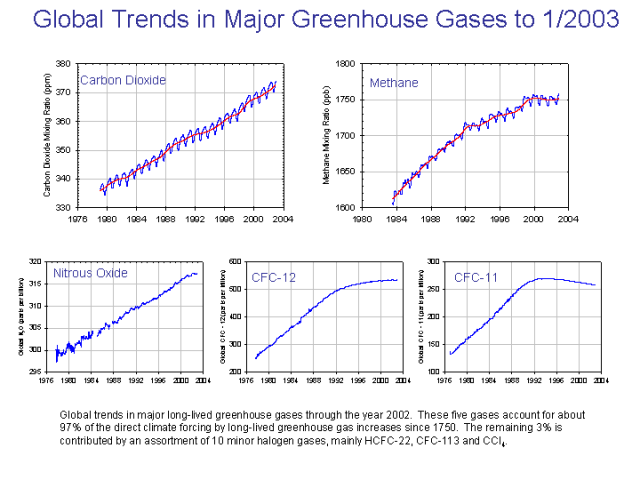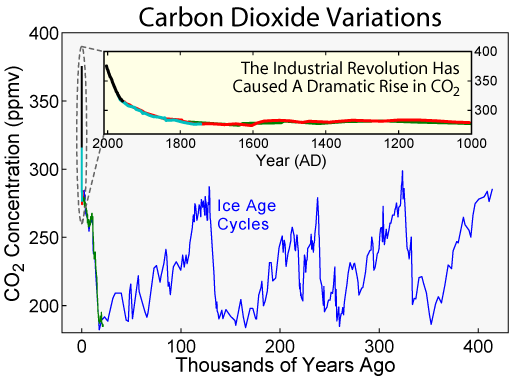The Kyoto Protocol - Just A Prophecy?
The Environmental & Health Expert names this post "The Kyoto Protocol - Just A Prophecy?". Is the Kyoto Protocol just an unrealistic prediction? Is it merely a feeble dream which countries share? Or a weak goal they aspire to achieve? I will be examining what the Kyoto Protocol is and how it is related to globalisation. Also, I will be talking about my opinions on the the impact it results in the world as well as its future outcome.
Materials Used: A Series of Graphs Which Will Be Analyzed
Sources:
http://en.wikipedia.org/wiki/Global_warming
http://en.wikipedia.org/wiki/Kyoto_protocol
*Note: Post is 100% original!
________
What is the Kyoto Protocol? How is it related to Globalisation?
Globalisation is the increasing global connectivity, integration and interdependence in the economic, technological, cultural, political, and ecological aspects. The ecological aspect examines global environmental challenges that can only be solved through international cooperation, such as climate change, pollution, as well as the spread and development of diseases and medicine. Out of the many global environmental challenges, one especially requires urgent attention of the international community as it threatens the survival of the Earth - climate change. Climate change is the change in the Earth's global climate over time. This change is influenced by both natural and human factors. However, since the Industrial Revolution, human factors have been contributing more and more to climate change. Their increasing emissions of greenhouse gases have risen to become the main 'ingredient' of climate change. Therefore, the Kyoto Protocol is implemented to help improve the state of the Earth. The global community needs to cooperate in order to bring climate change under control.
The Kyoto Protocol to the United Nations Framework Convention on Climate Change is an amendment to the international treaty on climate change, assigning mandatory emission limitations for the reduction of greenhouse gas emissions to the signatory nations. Currently, it is the only global action plan to curb carbon emissions and expires in 2012. It is rejected by the world's biggest polluter, the United States, and does not bind developing nations such as China and India. Below are some graphs which show the annual carbon emissions in each region, global trends in greenhouse gas emissions and lastly the carbon variations in time.
What do the graphs show about the impact of the Kyoto Protocol in various nations?
Graph 1
The first graph above shows the amount of greenhouse gas emissions in each region. From the graph, we can trace the increase/decrease in greenhouse gas emissions as in the past 200 years. The graph starts around the period when the Industrial Revolution began until the new millenium. We can observe that after the Industrial Revolution, the amount of greenhouse emissions have increased gradually until 1900 onwards when the emissions rise rapidly. However, i would wish to highlight that after the Kyoto Protocol was signed in 1997, the greenhouse emissions of most nations seem to either have dropped slightly or increased less rapidly. This actually shows the impact of the Kyoto Protocol in countries. Nations which have ratified the Kyoto Protocol have attempted to abide by it. USA, which accounts for 30% of the emissions in the world, has rejected the treaty. Therefore the graph which shows the trend in the greenhouse gas emissions for USA is constantly increasing. Not only USA, Canada is also denying the fact that action needs to be taken to curb carbon emissions. Both countries continue to contribute largly to global warming. The greenhouse gas emissions for India is increasing constantly due to the fact that it is a developing nation and need not abide by the protocol yet.
Thus we can actually see that the Kyoto Protocol does not have far reaching effects on every nation in the world. In fact, there are countries who disregard the Kyoto Protocol. The biggest contributor to global climate change, the US, did not sign the Kyoto Protocol. Also, Australia did not sign in. Canada signed the protocol but failed to follow it. Thus we can see that the Kyoto Protocol does not apply to these countries - there is little impact. The Kyoto Protocol also does not have much impact in developing nations such as China and India. This is because they are still developing and need not abide by it.
Graph 2
This table shows the global trends in greenhouse emissions in 2003. Note that this is after the signing of the Kyoto Protocol in 1997. In the first small graph, the carbon dioxide levels is increasing steadily. There is no drop in the amount of carbon dioxide being released into the atmosphere. One reason for this is that the biggest contributer of carbon dioxide (through industrial activities) USA, has not ratified the protocol. It is still emitting large amounts of carbon dioxide into the atmosphere. China, the second largest contributor to greenhouse gas emissions, is currently not required to abide by the protocol - China is still contributing largely to global warming. Moreover, the world population is increasing rapidly. The consumption of carbon dioxide in many areas is increasing, thus the overall levels continue to rise rapidly. Also, the levels of nitrous oxide is increasing. Nitrous oxide mainly comes from farming activities or cows. Since the world population is expanding at a fast rate, more food is needed to feed the population. Therefore this leads to more nitrous oxide being emitted. However, take a look at the graphs of methane, CFC-12 and CFC-11. CFC-12 is increasing less rapidly after the 1990s. In fact, it is almost at a constant rate. The trend of CFC-11 and methane actually dropped too.
In this graph, we can see that all the nations in the world have taken into two sides. The first group are countries which the Kyoto Protocol has far reaching impact on, and the other which the Kyoto Protocol has not much impact on. The Kyoto Protocol applies to countries which have signed the Protocol, yet developing nations need not abide by it. What does this show? This shows that although majority of nations have signed the Kyoto Protocol, not all of them need to abide by it. The Kyoto Protocol has far reaching impact on developed nations who have signed the Kyoto Protocol in particular. Third world nations need not have any obligations to abide by the protocol but they can participate. In the first graph, I have already explained how the Kyoto Protocol does not have much impact on certain nations. Now, countries which have to abide by the Kyoto Protocol have decreased further.
Graph 3
Finally this is the last graph of the three. it is different because it shows the cause of the implementation of the Kyoto Protocol, unlike the previous two which talks about the result of the implementation.
The graph shows the carbon dioxide concentration and its variations over time. The time range is from 0- 400,000 years ago. Notice that there is an almost periodic trend in the carbon dioxide concentration before the Industrial Revolution. There seems to be a pattern in the concentration of carbon dioxide in the atmosphere. We can see a trend in the carbon emissions until the Industrial Revolution began. Since the Industrial Revolution began, there is an increase in the number of industrial activities and all these activities emit carbon dioxide. The Industrial Revolution caused a drastic increase in the carbon dioxide emitted, even till today. The continual increase in the amount of carbon dioxide in the atmosphere will lead to global warming in near future and the wiping out of mankind. Therefore the Kyoto Protocol is implemented to delay this from happening.
The Kyoto Protocol is meant to exert pressure and have heavy impact on nations to reduce greenhouse has emissions as under the obligations. Each nation has its own resposibility to fufill the Protocol. For example, between 2008-2012, developed nations need to reduce their greenhosue gas emissions by 5% below their 1990 levels. European Union member states need to reduce by 15%. However, currently the reduction ranges from 8% for EU to 10% increase for Iceland. Therefore we can again, see that although the Kyoto Protocol is implemented to place impact on countries so that they will try to reach the reduction level, in reality few countries manage to fufill their obligations.
Further Reflections
In conclusion, I believe that the Kyoto Protocol is a good global action plan to curb carbon emissions although it has received much criticism. Since the main factor of global warming is the increase in carbon dioxide in the atmosphere, we should tackle the situation by reducing the amount of carbon dioxide being emitted into the atmosphere. The Kyoto Protocol aims to save the Earth and the wiping out of mankind by delaying global warming through the reduction of greenhouse gas emissions. Also, by ratifying this protocol countries reduce their greenhouse emissions, thus doing their part for a cleaner and greener Earth. Although the amount of greenhouse emitted is still increasing, it is increasing at a slower rate. Moreover, there have been successes in the reduction of greenhouse emissions. The United Kingdom and Sweden have succeeded in reducing the amount of greenhouse gas emitted. Therefore this show that the Kyoto Protocol is not mere wishful thinking. It is a fair protocol which work by the concept of "a common but differentiated resposibility". Different nations help save the Earth according to their abilities. Since developed nations contribute more to greenhouse gas emissions, they have to reduce their emissions by a larger percentage under the protocol. Developing nations have only been contributing relatively low levels of emissions. China and India are currently exempted from the requirements of the protocol as they are still developing.
USA has chosen not to ratify the protocol as the protocol is said to be doing too much damage to the US economy. Bush even described the protocol as "an unrealistic and ever-tightening straitjacket". Later, the White House even questioned the science behind global warming and that millions of jobs will be lost if USA joins in the pact. USA refuses to ratify the protocol ifor fear that China and India can then easily catch up with its economy. However, I do not think that these are valid reasons to not ratify the protocol. The Kyoto Protocol is meant to help signatory nations reduce greenhouse gas emissions; it is not aimed to delay economic progress. the US believes that millions of jobs will be lost due to the plunging of the US economy by signing the pact. A study in Nature discovered that "accounting only for local external costs, together with production costs, to identify energy strategies, compliance with the Kyoto Protocol would imply lower, not higher, overall costs." So why does USA accuse the protocol to be costly?ALso, majority of the greenhouse gas emissions come from developed countries and greenhouse gas emissions are still relatively low in developing countries. Its only right that developed countries reduce their emissions by a larger percentage. This can set a good example for developing nations to follow when they become developed. Also, i would like to clarify that the science behind global warming is certified to be true. We have seen the effects of global warming: ice caps melting, more often occurrence of natural disasters (such as hurricanes in 2005), increase world temperatures etc. How can all these be false? Are these arguments by the US merely excuses for its rejection of the Protocol?
Given the reasons above, I really hope that USA would ratify the Kyoto Protocol. This is because when the current treaty expires in 2012 and USA has not ratified it, many other nations would follow suit and by then, all the previous efforts to save the environment would be futile.
Yours,
The Environmental & Health Expert
♥ SERENE.


